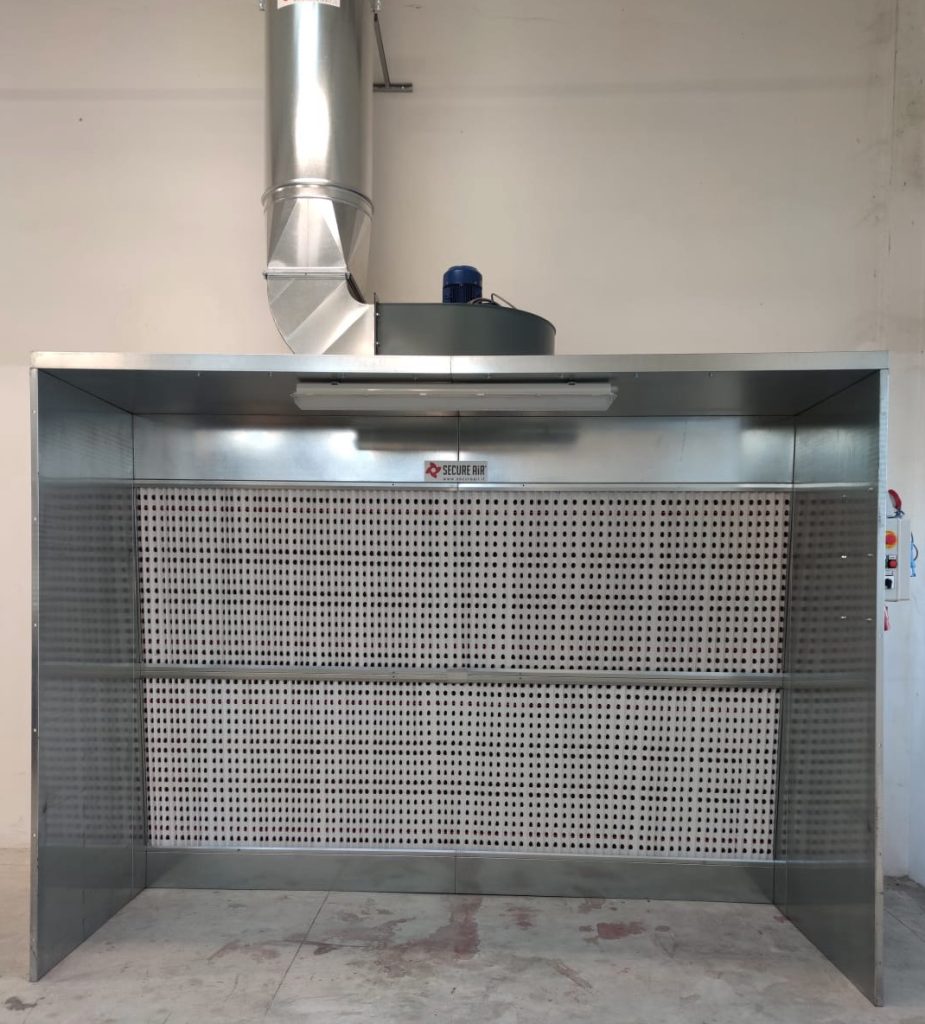
In the case of painting, gluing, or working with chemical compounds on medium-sized parts, the treatment of the air in production is essential for the safety at work of the operators, so as to protect them from health risks arising from exposure to dangerous fumes. The suction wall is an excellent technical solution that does not involve invasive installations or large investments, let’s see how.

The suction wall for painting is the ideal solution for making:
In fact, the geometric shape of the suction wall, typically without the roof, allows the operator of the bridge carriage to place the pieces to be painted in front of the wall with obvious advantages in working time.
Thanks to the effective frontal suction of pollutants, the suction wall for painting is the essential tool for the reduction of chemical risk that as we know is inserted in every company within the DVR, the document assessing all the risks to the safety and health of workers in the company, and analyzing:
The ideal method to install the suction wall is to position it in such a way as to create a well-defined work area, within which the operator is required to carry out operations that produce pollutants as close as possible to the suction front, which, thanks to the high flow rate, generates a horizontal airflow in the direction of the filters, thus preventing the chemical compounds from dispersing into the working environment.
It is recommended to use side extensions and short roof, so as to exclude the area of application from lateral drafts that would counteract the suction capacity of the suction wall for painting.
 |
According to European and national regulations, the air inside a company that uses chemical compounds must be purified by VOC (volatile organic compounds) and SOV (volatile solvent compounds):
In particular, the processes that produce SOV, in addition to the release of different pollutants, depending on the chemical agents used, cause strong odors and are annoying both for those who work within the production department, and also for other employees as the fumes move quickly following the air currents. The regulations for the use of paints and other chemicals are increasingly strict because of the considerable damage to the health of operators that these compounds cause, especially for those who are exposed to daily fumes: in these cases, it is always required to suck the SOV at the source as in the case of the suction wall. |
 |
Paints and overspray are filtered by two main stages, always present in all the suction walls of painting:
This particular system allows the air to change direction in order to push the paint particles inside, in the second stage of filtration. Features: thickness 60 mm / front layer Paper 260 g/m2
Features: weight 200 g/m2 and thickness 50 mm Subsequently, depending on the type of processing and the products used (for example, whether with solvents or water-based) other filter stages for ultrafine powders or activated carbon are introduced for the absorption of volatile organic compounds VOC and odors.
|
Double configuration |
|
 |
 |
Contact our consultants for more information about the suction wall for painting or other products applicable in different sectors.
Fill in the form below to request a quote by email, agree on special conditions, or technical clarifications